Tub Cut Out or Walk-in Tub: Which is Right For You?
Posted on by John Burfield
For those with limited mobility, a traditional step-in bathtub can often be a challenge or even a safety hazard. Luckily there are solutions for those who want to be able to take a warm bath but for whom a standard tub is no longer a safe option. These solutions include tub cut-outs and walk-in bathtubs. While these both achieve the basic goal of making a bathtub accessible, they differ greatly in features, cost, and potentially ease of use depending on the user's mobility.
Tub Cut-Out
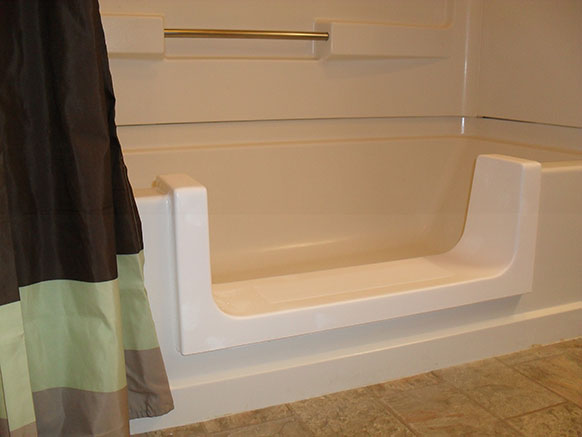
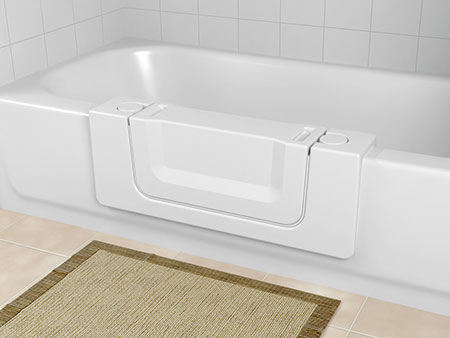 A tub cut-out is a quick and economical option for converting a standard bathtub into a "step-in" shower or bathtub. During this process, a portion of the sidewall of an existing bathtub is removed and a watertight composite insert cap is placed over the cut-out. This reduces the height of the sidewall to approximately 6 to 6 ½ inches, allowing for easier access to the tub as it provides a lower height needed to lift your foot to get into the tub.
A tub cut-out is a quick and economical option for converting a standard bathtub into a "step-in" shower or bathtub. During this process, a portion of the sidewall of an existing bathtub is removed and a watertight composite insert cap is placed over the cut-out. This reduces the height of the sidewall to approximately 6 to 6 ½ inches, allowing for easier access to the tub as it provides a lower height needed to lift your foot to get into the tub.
If you’d like to continue to use your tub to take a bath rather than a shower, you’ll need to choose a tub cut out with a watertight door or convertible door option. This will prevent water from leaking out of the tub once it is filled with water to the desired level. The user can shower using a standard shower curtain to contain water, regardless if you choose to add the door option or not.
As noted, a tub cut out is an affordable and quick option with a starting cost of around $1,495 for a convertible door model with the installation. It can typically be completed in one day and can be done on a fiberglass, steel, or cast-iron bathtub
While this can be a good solution, there are several drawbacks.
- While transfer from a wheelchair is possible, it is not ideal.
- The user will need to lower themselves into standard tub depth to bathe, so grab bars or mechanical bath lift are recommended.
- To avoid water from leaking out of the tub, the user will need to be in the tub while it fills with water, and when it drains after you're finished bathing.
- A tub cut out cannot be used with whirlpool jets or lined bathtubs.
Walk-in Bathtubs
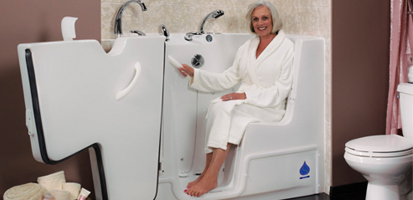 A walk-in tub is probably a product that you're more familiar with as they're often featured in television commercials or print ads. Walk-in tubs are heavy duty replacement tubs for your standard shower/bathtub combo. They have a watertight door that typically swings out and a seat built into the design, making it a safe solution for those who can no longer lift their foot high enough to get into a standard tub. Most walk-in tubs come with therapeutic whirlpool jet options and other features such as handrails and an adjustable shower head for seated showering.
A walk-in tub is probably a product that you're more familiar with as they're often featured in television commercials or print ads. Walk-in tubs are heavy duty replacement tubs for your standard shower/bathtub combo. They have a watertight door that typically swings out and a seat built into the design, making it a safe solution for those who can no longer lift their foot high enough to get into a standard tub. Most walk-in tubs come with therapeutic whirlpool jet options and other features such as handrails and an adjustable shower head for seated showering.
They are the safer bathing option since they have a sturdy design and a low threshold, and the user does not need to lower themselves to standard tub depth. Jetted tubs also have great therapeutic advantages over non-jetted tubs for those with arthritis, circulation issues, or general aches and pains.
As with a tub cut out, there are also some drawbacks to a walk-in bathtub.
- It is a significant modification that often requires a permit. The project can take a week, especially if plumbing must be altered.
- Walk-in tubs can be expensive. Buyers can expect to spend up to $10,000 or more for a tub with installation depending on the make, model, and features you choose.
- Like a tub cut out, the user must be seated in the tub during the filling and draining process to avoid water from leaking out of it. However, unlike tub cuts, there are fast filling and draining features available from many manufacturers.
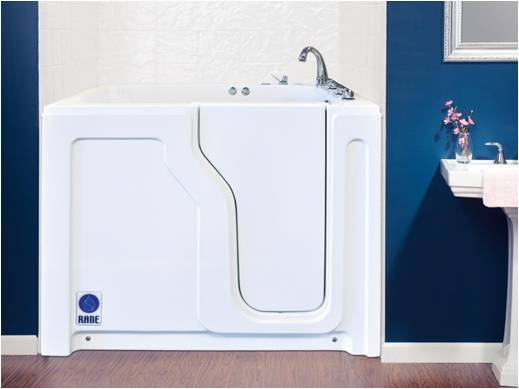
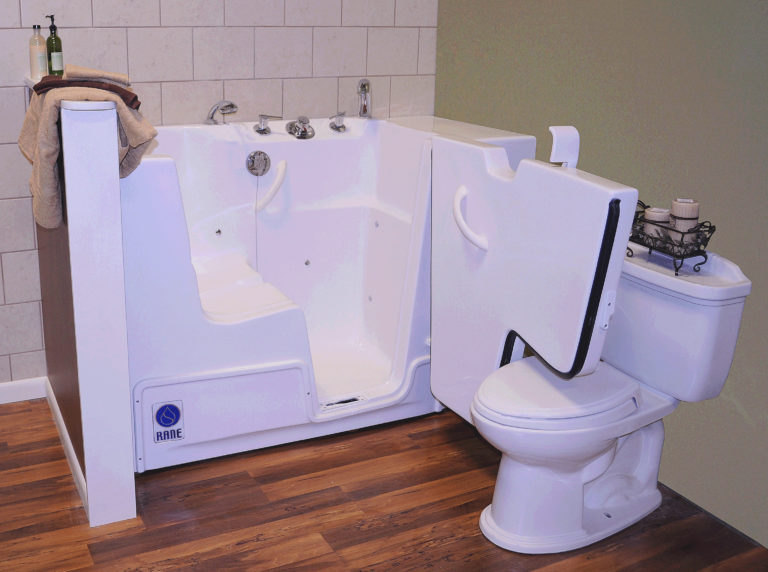
Final Thoughts
If you are on a limited budget or need a quick turnaround, a tub cut may be the right solution for you. Keep in mind that the ideal user should have ample mobility and upper body strength to comfortably use this solution for bathing.
While the costlier option, walk-in bathtubs are typically safer and offer more therapeutic benefits than a tub cut. If you feel that a walk-in tub is a right solution but it’s not within your budget, check to see if you qualify for third-party funding such as Medicaid waivers. Many providers also offer consumer financing which might make sense for you.
For more information on either one of these bathtub safety solutions or to schedule a free consultation, please don't hesitate to contact us.
